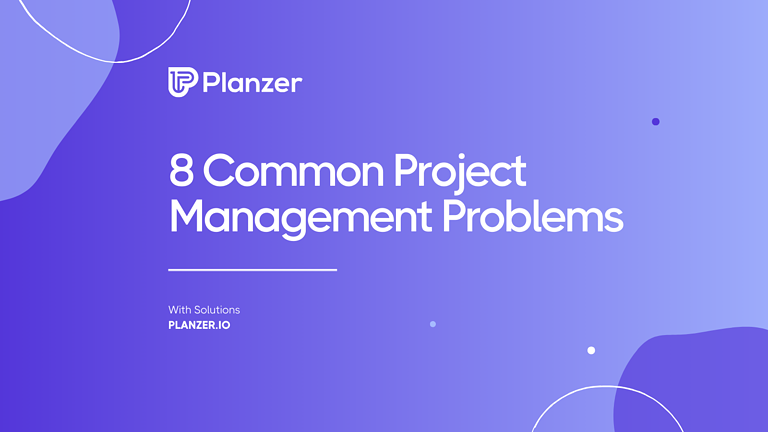In the world of project management, there are two critical terms that every aspiring project manager must know: Enterprise Environmental Factors (EEF) and Organizational Process Assets (OPA).
EEF and OPA refer to the internal and external factors influencing a project’s success. Understanding these two concepts is crucial for any project manager who wants to deliver projects successfully.
This article will delve deep into EEF and OPA, their importance, and how they differ. We will also discuss the factors that impact EEF, examples of EEF in real-life scenarios and types of OPA along with some examples.
So sit tight and get ready to understand how utilizing EEF and OPA can help you become a better project manager and lead to successful project outcomes.
What are EEF and OPA?
EEF refers to external factors like laws and market trends, which can impact a project. OPA refers to internal assets such as procedures and templates that help manage projects.
Effective project management requires understanding both, as they can influence project success during planning.
Importance of EEF and OPA
Effective project management requires understanding internal and external factors that can impact the project’s outcome. Enterprise Environmental Factors (EEF) refer to external factors like legal restrictions or marketplace conditions, while Organizational Process Assets (OPA) are internal assets like knowledge repositories or templates.
By considering both EEF and OPA during decision-making and the execution of management processes, a project manager can increase efficiency and improve overall performance with the help of a project management office.
Understanding Enterprise Environmental Factors
Understanding the external factors that can affect a project’s success is essential in project management processes.
These external factors fall under the purview of Enterprise Environmental Factors (EEF), which include government regulations, industry standards, and market trends.
On the other hand, internal tools such as Organizational Process Assets (OPA), including policies, procedures, and knowledge repositories, aid in managing projects effectively. Aspirants preparing for PMP or PMI-ACP exams must understand these concepts to perform better on the exam.
Factors impacting EEF
External Enterprise Environmental Factors (EEF) that affect project management include government regulations, market trends, industry standards, organizational culture, legal environments, and stakeholder expectations. Identifying and considering these factors are essential during project planning as they significantly impact the project’s success.
To manage projects effectively, there are internal Organizational Process Assets (OPA) such as tools, procedures, knowledge base, templates & work authorization systems.
EEF examples
External EEFs, like legal restrictions, political climate and marketplace conditions, and internal EEFs, such as organisational culture and resource availability, including enterprise environmental factors, can influence a project’s success.
PMI pmp aspirants can benefit from understanding the distinction between EEFs and OPAs, including knowledge base, templates, historic records, configuration management and work authorisation systems.
These assets help enable effective management of the project team and successful completion of project management processes.
Understanding Organizational Process Assets

Effective management of projects requires organizations to have Organizational Process Assets (OPA) such as templates, guidelines and policies.
These resources help project teams complete tasks efficiently while maintaining consistency. OPA is a vital component outlined in the Project Management Body of Knowledge (PMBOK), which guides managing processes for any performing organization.
Incorporating OPA into project management processes allows aspirants to succeed by following best practices and knowledge repositories.
Types of OPA
In project management, Organizational Process Assets (OPA) refer to an organization’s accumulated knowledge base, processes, and procedures. The two types of OPA are Explicit (documented processes, templates, guidelines) and Tacit (knowledge, skills, experience).
Utilizing both types can improve management practices’ efficiency.
Leveraging historical information in OPA knowledge repositories or commercial databases like Wikipedia or marketplaces such as PMI-ACP certification or PMP exam aspirants can ensure the project’s success.
OPA examples
As an integral part of project management practices, Organizational Process Assets (OPA) comprise documented processes such as templates and guidelines used by the performing organization.
Additionally, they include tacit knowledge in the form of expertise and experience possessed by individuals. Leveraging these assets can lead to improved efficiency of project management processes.
Differences between EEF and OPA
Enterprise Environmental Factors (EEF) and Organizational Process Assets (OPA) are crucial concepts in project management.
External EEF, like legal restrictions and market conditions, can impact the project environment, while internal EEF, like governance and organizational culture, can affect project management.
Meanwhile, OPA includes documented processes such as templates and guidelines that can help streamline project management processes. Proper utilization of these concepts will lead to improved outcomes for future projects.
Comparison between EEF and OPA
Effective management of a project requires understanding the differences between EEFs and OPAs. EEFs refer to external factors like market conditions or legal restrictions, while OPAs are internal processes and accumulated knowledge.
Both can impact a project’s success significantly. To manage a project effectively, it’s essential to consider both EEFs and OPAs during the planning phase.
Stakeholders can achieve better outcomes by understanding how these factors interplay with a project’s environment.
Conclusion
In conclusion, Enterprise Environmental Factors (EEF) and Organizational Process Assets (OPA) are critical elements that are crucial in project management.
The EEF includes any external factors that affect the project, while OPA refers to internal assets specific to the organization. Understanding these factors is essential to ensure your project runs smoothly and stays on track.
By identifying the factors impacting EEF and the types of OPA available, you can better understand how to leverage these assets for successful project execution.
Read our comprehensive guide on EEF and OPA best practices to learn more about how EEF and OPA impact project management.
FAQ
What is the difference between OPA and EEF?
In project management, EEFs are external factors like laws and market conditions, while OPAs are internal factors like company policies and historical data. Knowing the distinction is crucial for effective project planning.
What is an example of OPA and EEF?
OPAs are internal assets like policies and procedures that can impact project success. EEFs refer to external factors, such as regulations or cultural norms, that can also have an effect. Identifying and considering enterprise environmental factors and OPAs when planning a project is crucial to ensure its success.
What is OPA in project management?
In project management, OPA (Organizational Process Assets) refers to a company’s policies, procedures, and knowledge base that can impact project success. This includes templates, historical data, and lessons learned from previous projects.
Utilizing OPA, including organisational process assets, can enhance project efficiency and effectiveness by leveraging existing resources.
What are OPAs and EEFs?
OPAs are internal resources, like policies and templates, while EEFs are external factors, like regulations and market trends. Both impact project success and must be considered during planning. Effectively using OPAs and EEFs, organization process assets, can improve project management efficiency.



![Task Management vs Project Management [Ultimate Guide]](https://planzer.io/wp-content/uploads/2023/06/Task-Management-vs-Project-Management-Ultimate-Guide-768x432.png)